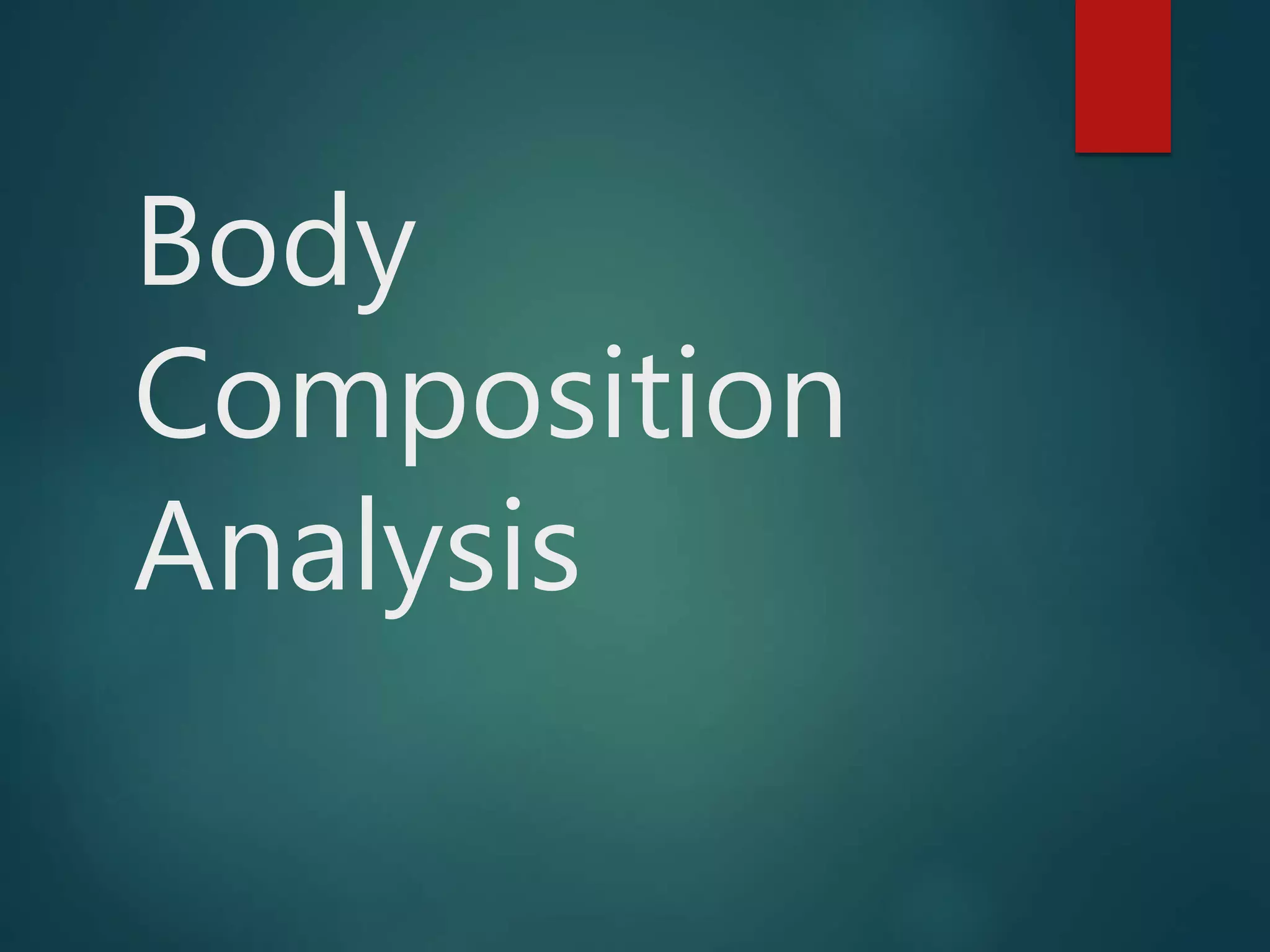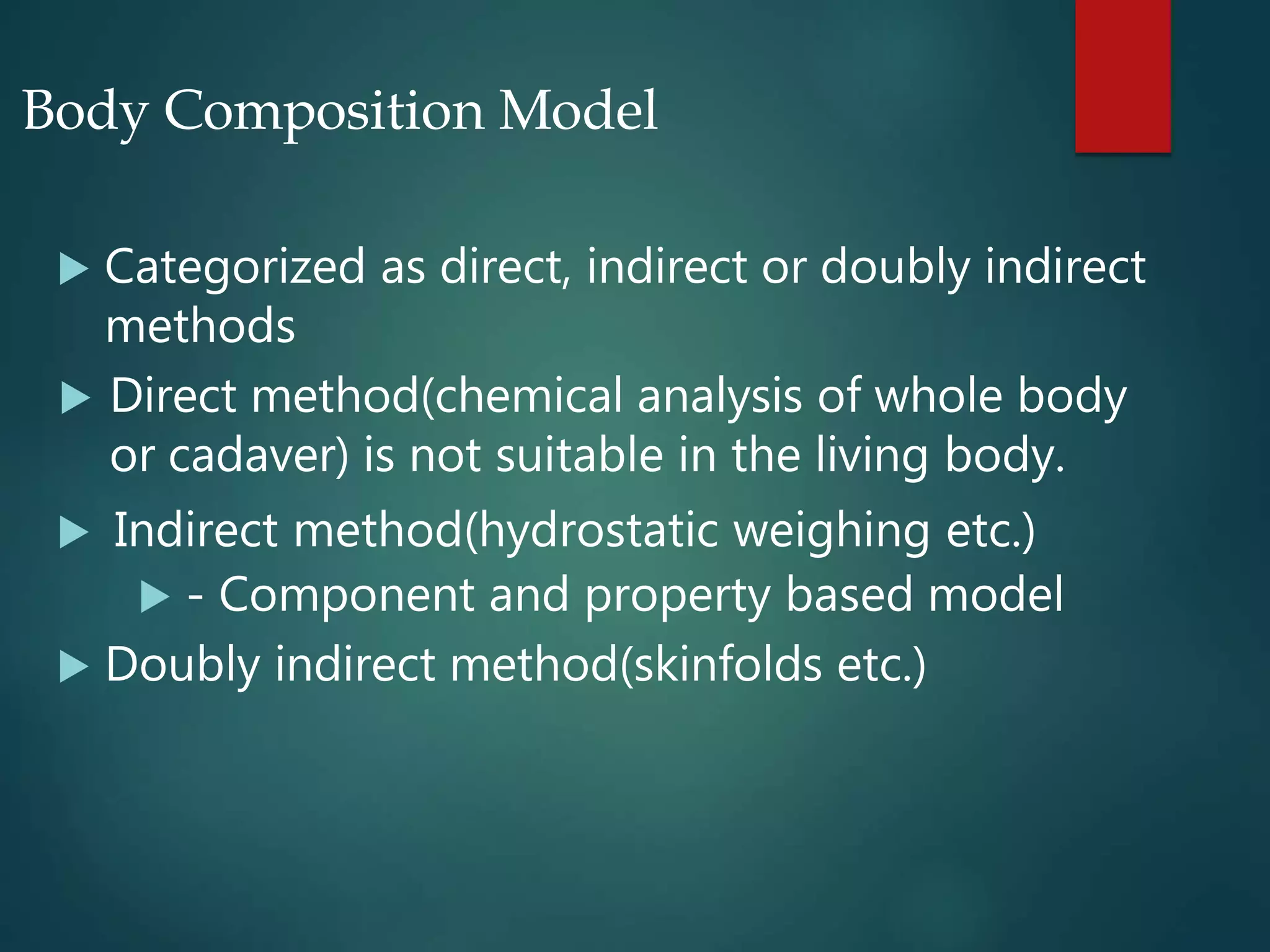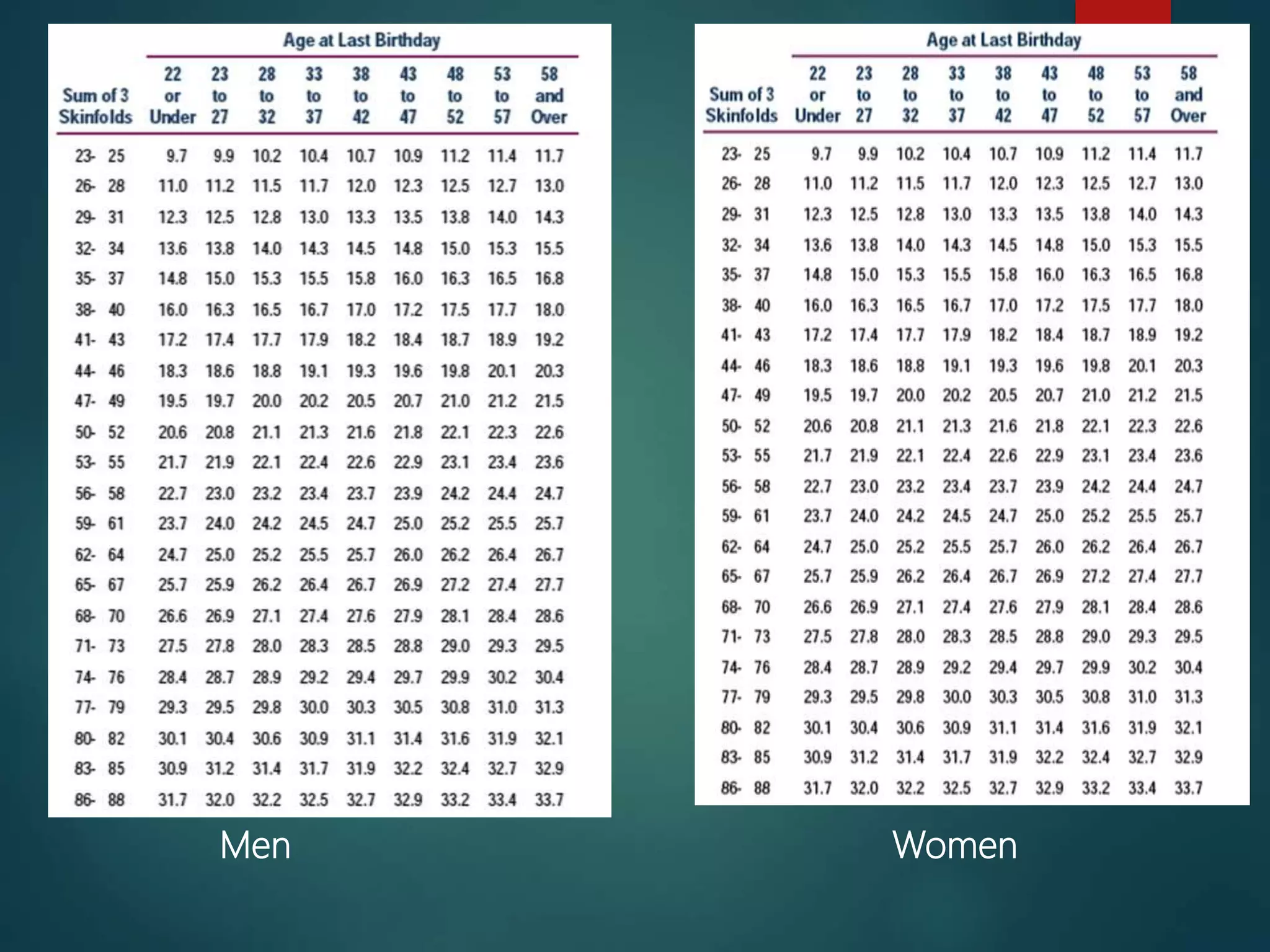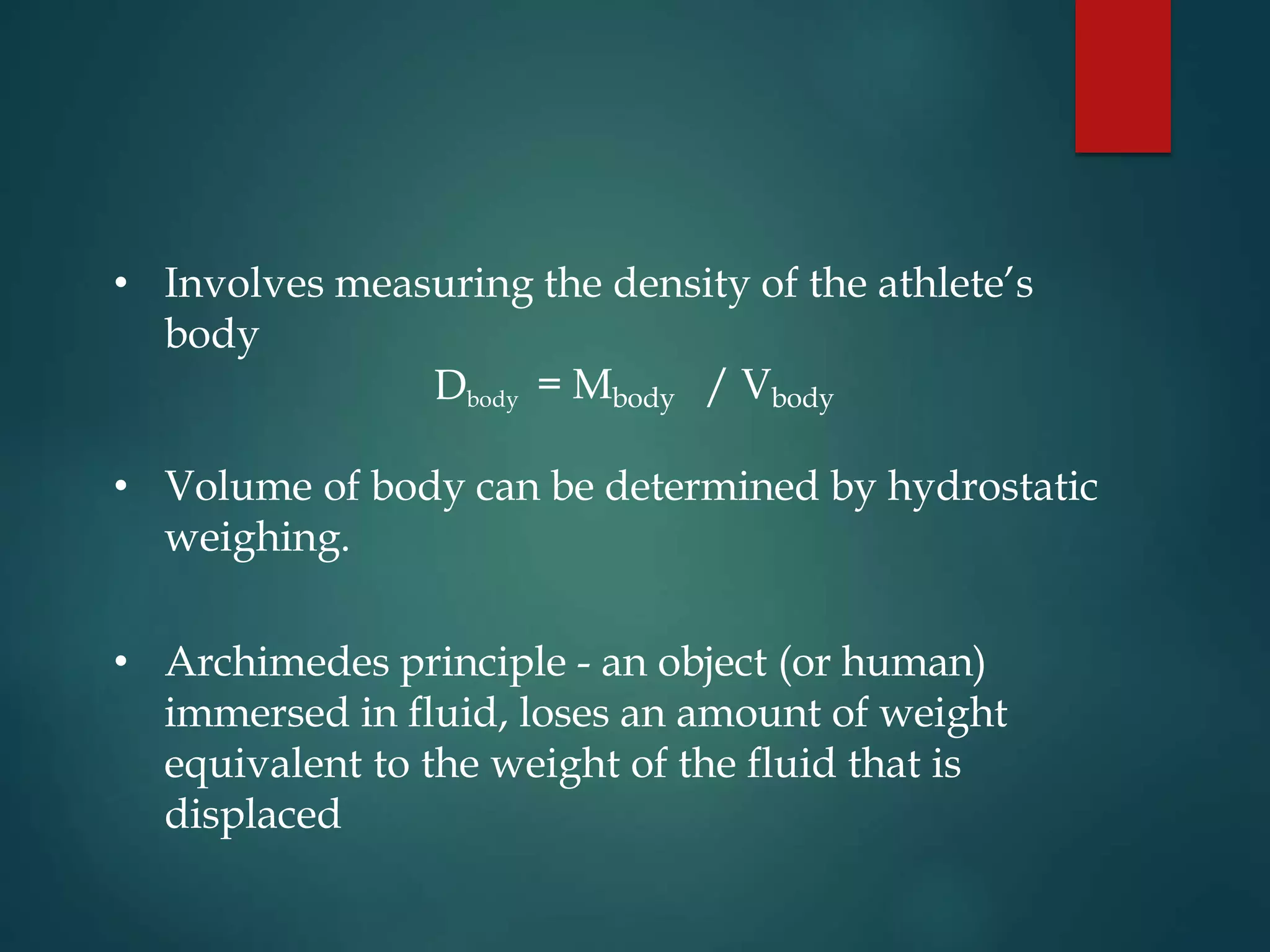The document discusses body composition analysis, which describes the relative proportions of fat, bone, and muscle mass in the human body. It defines key terms like essential fat, storage fat, and fat-free mass. The document outlines various methods to measure body composition, including hydrostatic weighing, air displacement, skinfold tests, bioelectrical impedance analysis, and DEXA scans. Maintaining a healthy body composition is important for reducing disease risks and athletic performance.



































